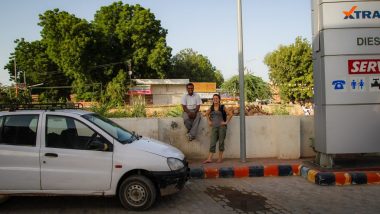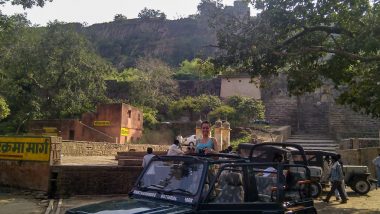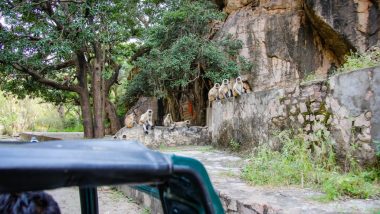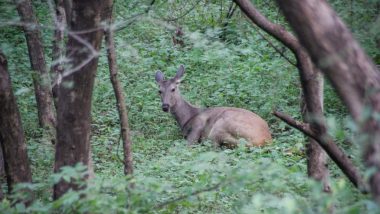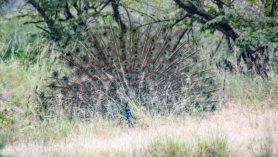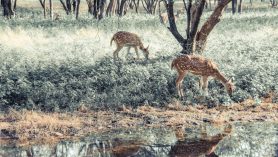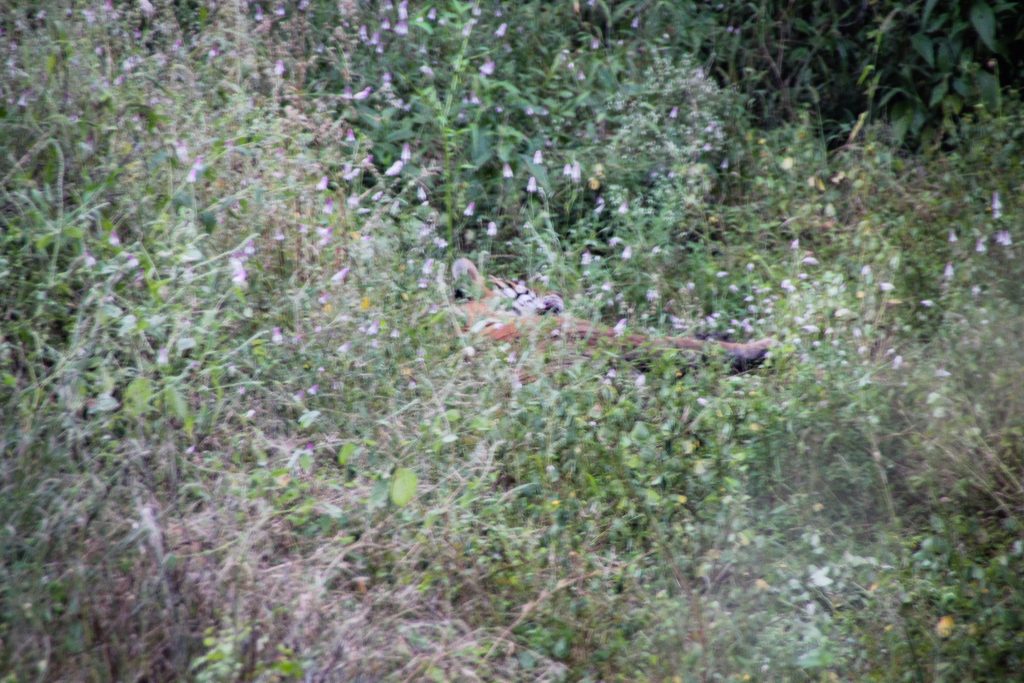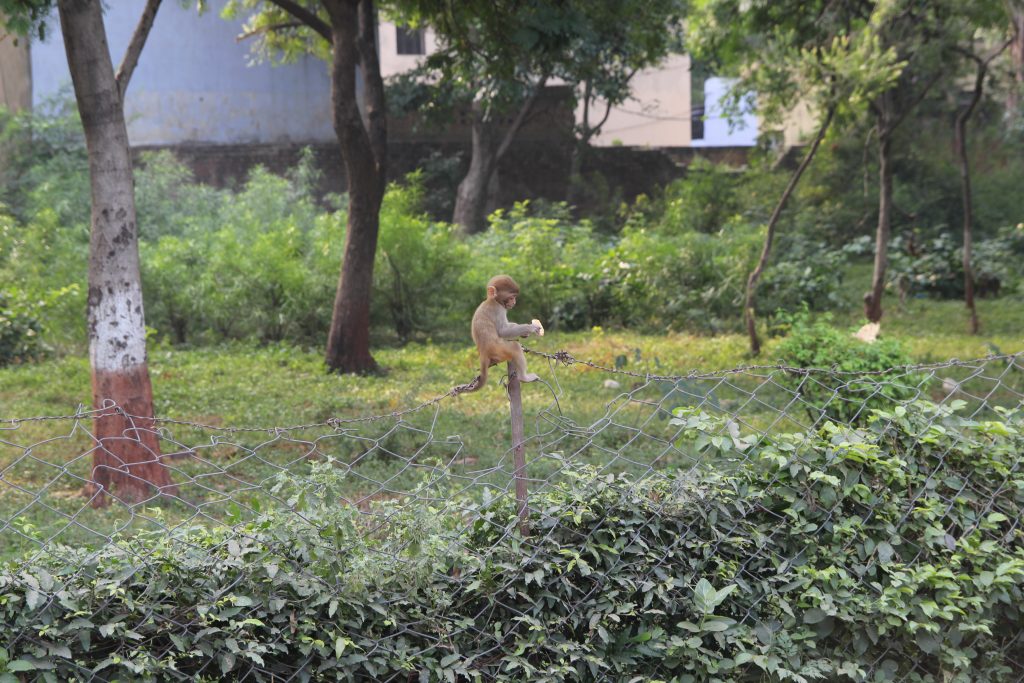Leaving the cities
Finally we left the chaotic cities and were on our way to see some nature and wildlife!
As I like to watch nature documentaries I was definitely looking forward to this part of the trip. Ever since I read about tigers in Rudyard Kipling’s The Jungle Book I had wanted to see one in real life and in their natural habitat.
Ranthambore National Park
Ranthambore National Park, 300 km (186 miles) south of New Delhi, is one of India’s most well-known national parks.
It used to be the hunting grounds of the royals of Jaipur. This is not the case anymore.
Instead, all the hunting nowadays is done by the real “king of the jungle” – the Bengal Tiger (Panthera tigris tigris).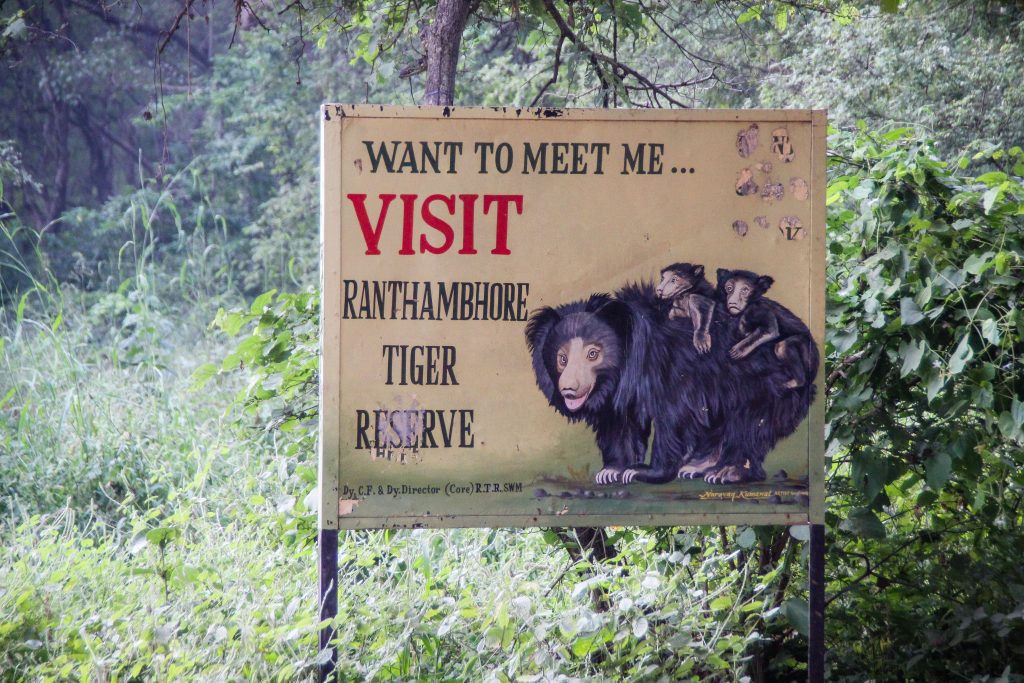
But there is more to the Ranthambore fauna than tigers, even though the tigers are the main attraction.
How about 320 species of birds, 35 different types of reptiles and more than 40 species of mammals. Including monkeys, cobras, deers, sloth bears, hyenas, crocodiles and leopards.
Still endangered
Ranthambore National Park was established in 1980 and is home to 67 tigers according to the latest count (2016).
The past ten years has seen a steady increase of the tiger population and there are now plans to relocate some of the tigers to areas where tigers have disappeared.
Sadly, but not surprising, the main reason for the decline in tigers is caused by man.
Deforestation is one of the main reasons for the increase. But even though Ranthambore is a one of the most famous tiger reserves in India they too have problems. And that problem is poaching.
Traders can pay poachers (often poor locals) just a few dollars to kill a tiger. While the traders in return get paid up to 125,000 USD for a tiger rug.
It is all about money, money, money. I am getting more and more cynical the older I get.
Just how hopelessly stupid can some parts of mankind get?
Best time to visit
Ranthambore is closed every year between June – September because of the monsoon season.
The best time to visit is from November – February, when the weather is most ideal and pleasant.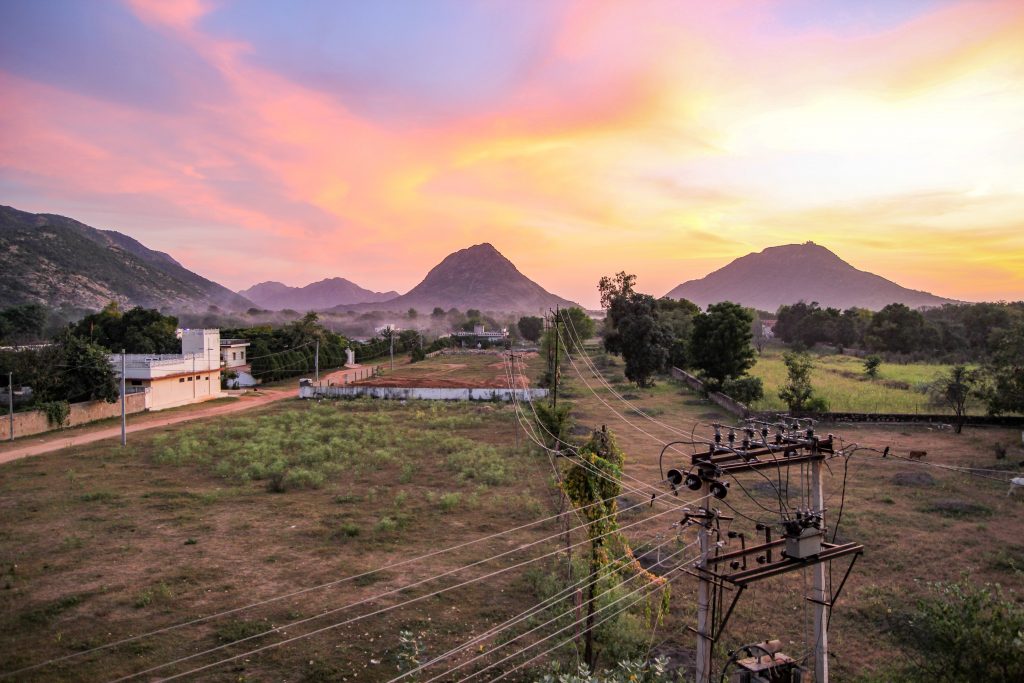
We visited in the beginning of October, so the park had just opened for the season.
A car or a truck
There are two different types of safari vehicles to choose from.
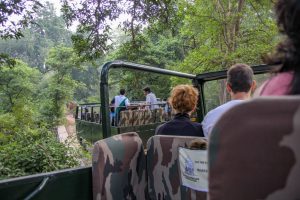
Either you can go on a Jeep safari that carries up to 6 people. Or you can go on a Canter Safari, a large convertible truck that accommodates up to 20 people.
The later was the least expensive so we went cheap and big this time.
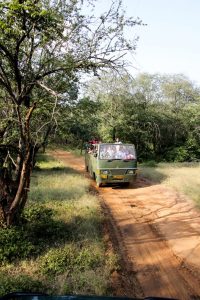 I can not say that we felt that disappointed when we got on board. Because we were rather lucky as there were only about ten people on our truck.
I can not say that we felt that disappointed when we got on board. Because we were rather lucky as there were only about ten people on our truck.
We had plenty of space to sit and there was enough room for taking photos without getting in each other’s way.
Even so, in retrospect, we probably should have paid a bit extra to go in a jeep.
They are both more comfortable and, most importantly, they are easily operable and they are quicker. Taking a ride in the Canter felt a bit like hoovering around in a big bumpy ship.
Tourists pay more
The cost of the safaris did not differ that much though.
If I remember it correctly we payed about 2000 INR per person for a 3,5-hour sunset drive in the Canter, and a Jeep safari would have been a thousand more. (Indian nationals pay about half price compared to foreigners.)
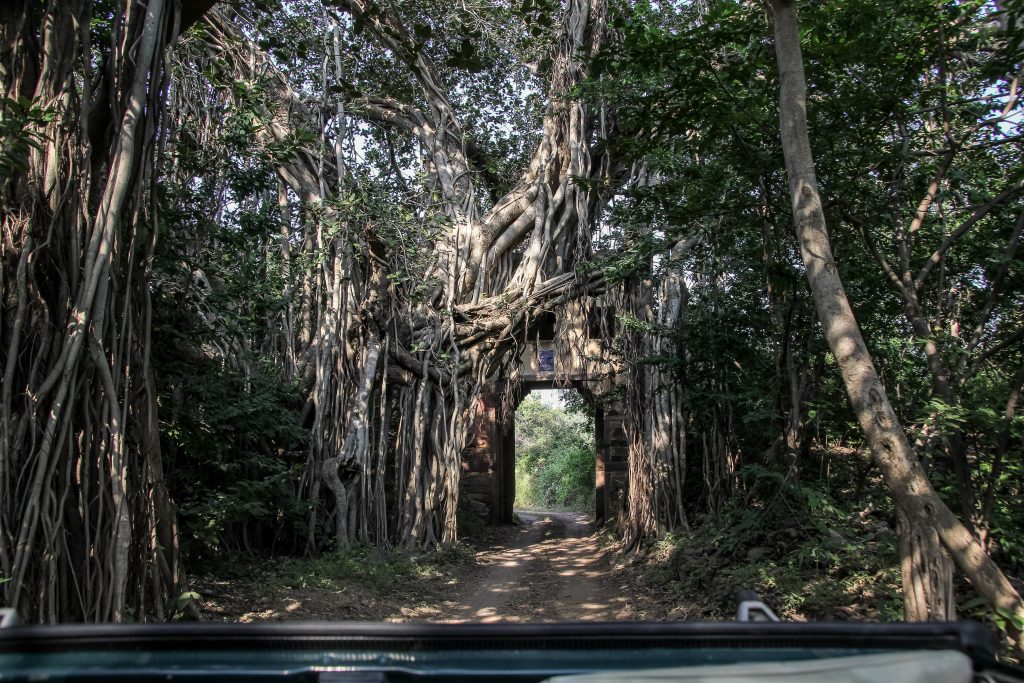 The entrance to the park felt somewhat like Angkor Wat in Cambodia. With overgrown old temple ruins, as strangler fig trees had wrapped their roots around the temple walls.
The entrance to the park felt somewhat like Angkor Wat in Cambodia. With overgrown old temple ruins, as strangler fig trees had wrapped their roots around the temple walls.
Go early or late
Ranthambore is one of the most scenic national parks we have visited.
As the evening sun slowly started to set, and the temperature got cooler, the animals began to be more active in their search for food.
Early mornings and late afternoons are often the best time to spot wildlife, and Ranthambore was no exception.
A beautiful peacock, standing on the side of the road, opened its wings. A heard of spotted deer, or chital, swiftly looked at us and then continued grazing when realizing that we posed no threat.
No tigers
An hour past, but still no tigers.
It felt like the perfect evening to find a tiger. Everything was so calm, and the weather was nice and warm.
There were a lot of tiger pray moving around, so it was not like there was a shortage of food opportunities either.
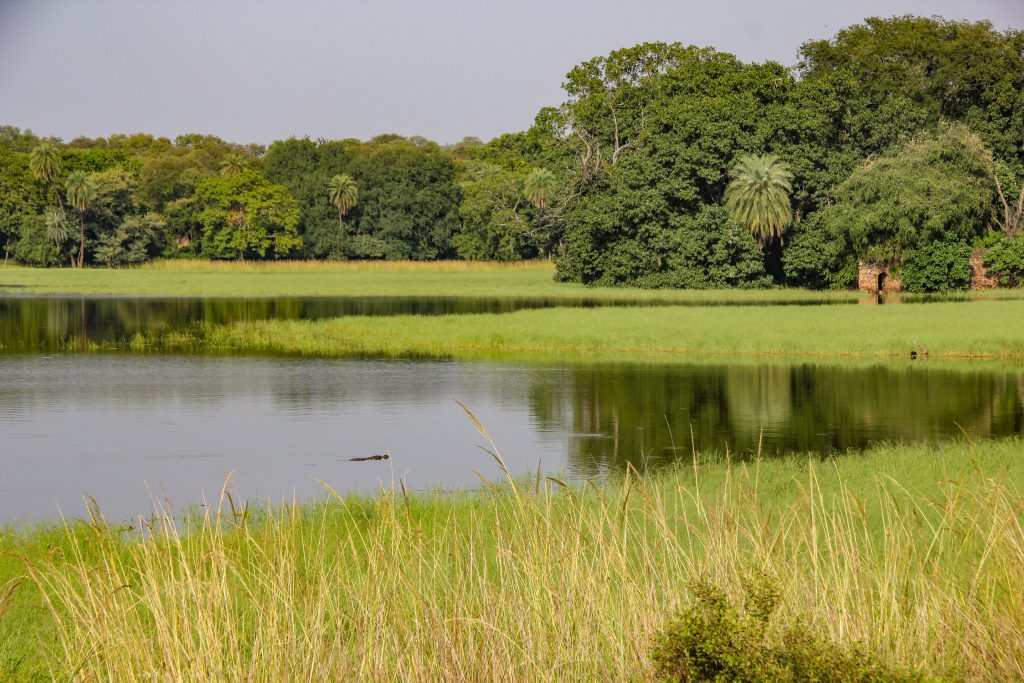 We drove past a beautiful lake with an old temple on the opposite side, it looked just like a scene from a nature film.
We drove past a beautiful lake with an old temple on the opposite side, it looked just like a scene from a nature film.
I imagined that a tiger would step up on the top of the ruin, that would have been the most perfect photo shot ever. But no, not this time.
Still no tigers
We kept driving and driving and soon three hours had past, still no tiger.
We started to lose hope and eventually our guide told us, “Sorry, now park close, we have to turn back…”
Ten minutes later we were just 200 meters from the park exit, and I was already planning on booking an early morning drive the next day.
Suddenly the radio cracked and the guide turned towards us. “The vehicle in front of us has seen tiger!”
Tiger
We looked at the jeep that was ahead of us and the people onboard were looking and pointing at something in the vegetation on the left side of the road.
We parked our truck next to them, and saw, absolutely nothing.
“Where is it?” I asked a guy in the other car.
“There, it´s lying in the bushes about 100 meters from us.”
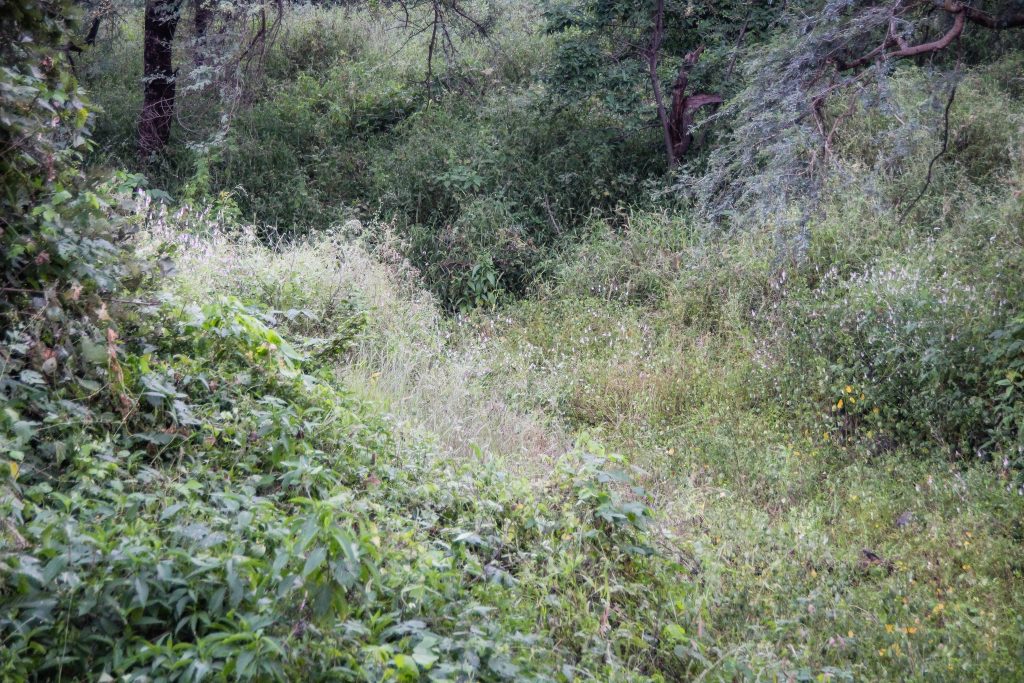 First, we saw only grass. Then suddenly there was movement.
First, we saw only grass. Then suddenly there was movement.
The tiger moved its tail and gave away its position. Even though it was pretty far away it was clear that it was a tiger, lying on its side relaxing in the tall grass.
Never content
We managed to snap some blurry photos for evidence.
The most important thing was after all to be able to tell the world that we had seen a real tiger and to check that tiger box on the bucket list.
Or, not that important really. Even though nice photos are nice to have.
Of course we were very happy that we had found a “wild” tiger. (That happens to live in a park.)
It was just that the feeling was that it could have been a lot better. After all, Ranthambore is one of the best places in the world to encounter tigers in the wild.
We managed to enjoy our little “encounter” for a few more minutes before our guide told us that we really had to keep going. The park and the guides have strict time rules to follow and it was quickly getting dark too.
No more safari
We went back to our hotel and thought about if we should book another safari the next day. Maybe we would be more lucky tomorrow?
As our travel schedule started to be a bit tight, and we still had to go to Agra and catch the train to Varanasi, we finally decided that “our” tiger was good enough for now.
In the end, the whole park experience had been great. Except for the tiny fact that we did not get that close-up meeting that we had hoped for.
We were super content anyway.
After all, Ranthambore was much more than just tigers. It was both more beautiful and peaceful than we had ever expected.
Unique turns normal
Even so, most of the other safaris we have been on in the past have been kind of similiar.
You build up so much hope and anticipation for that special thing you want to see. So when you finally find the animal you were looking for you get an adrenaline rush for a couple of minutes, and then the feeling quickly fades away.
It is kind of funny really.
Like a first time encunter while being on a safari in Africa:
“Wow, a lion! And a giraffe, and a zebra, and an elephant!”.
Half an hour later the reactions are a bit calmer:
“Oh, there is another zebra, nice.
I do not need any more photos thanks, got plenty already.
Is there anything else new that we have not seen yet?”
Maybe a bit exaggerated, but I think you catch the drift.





